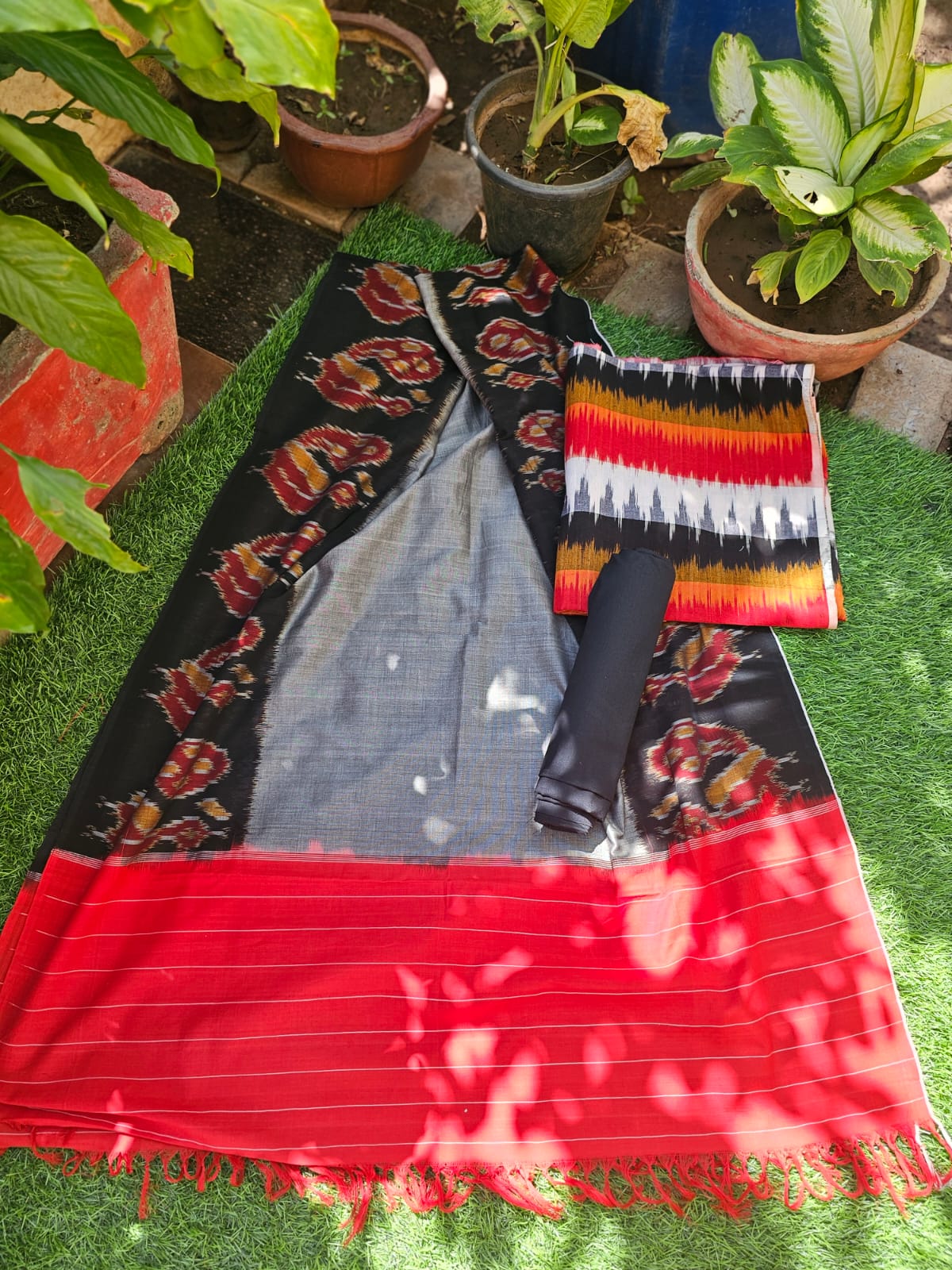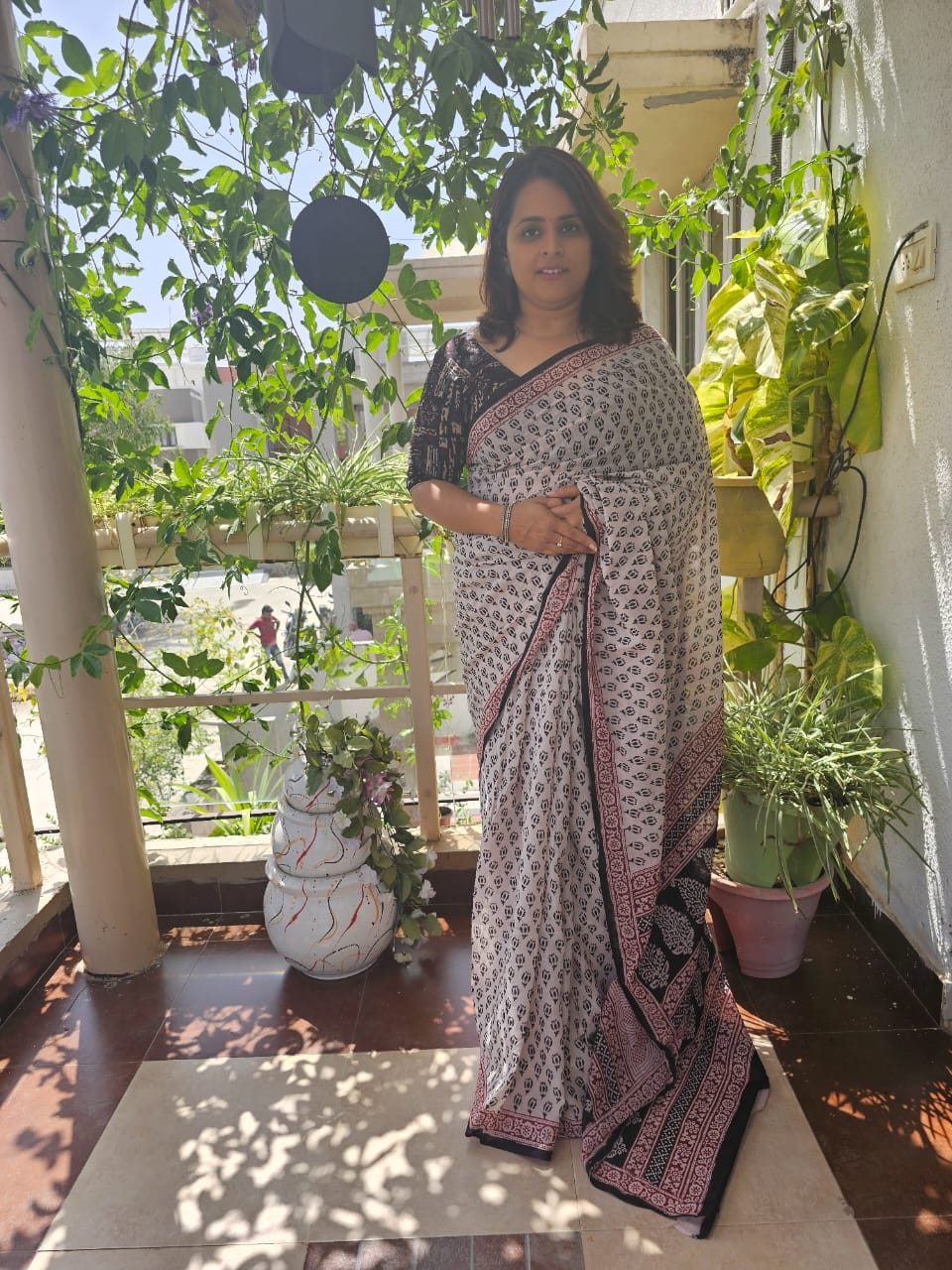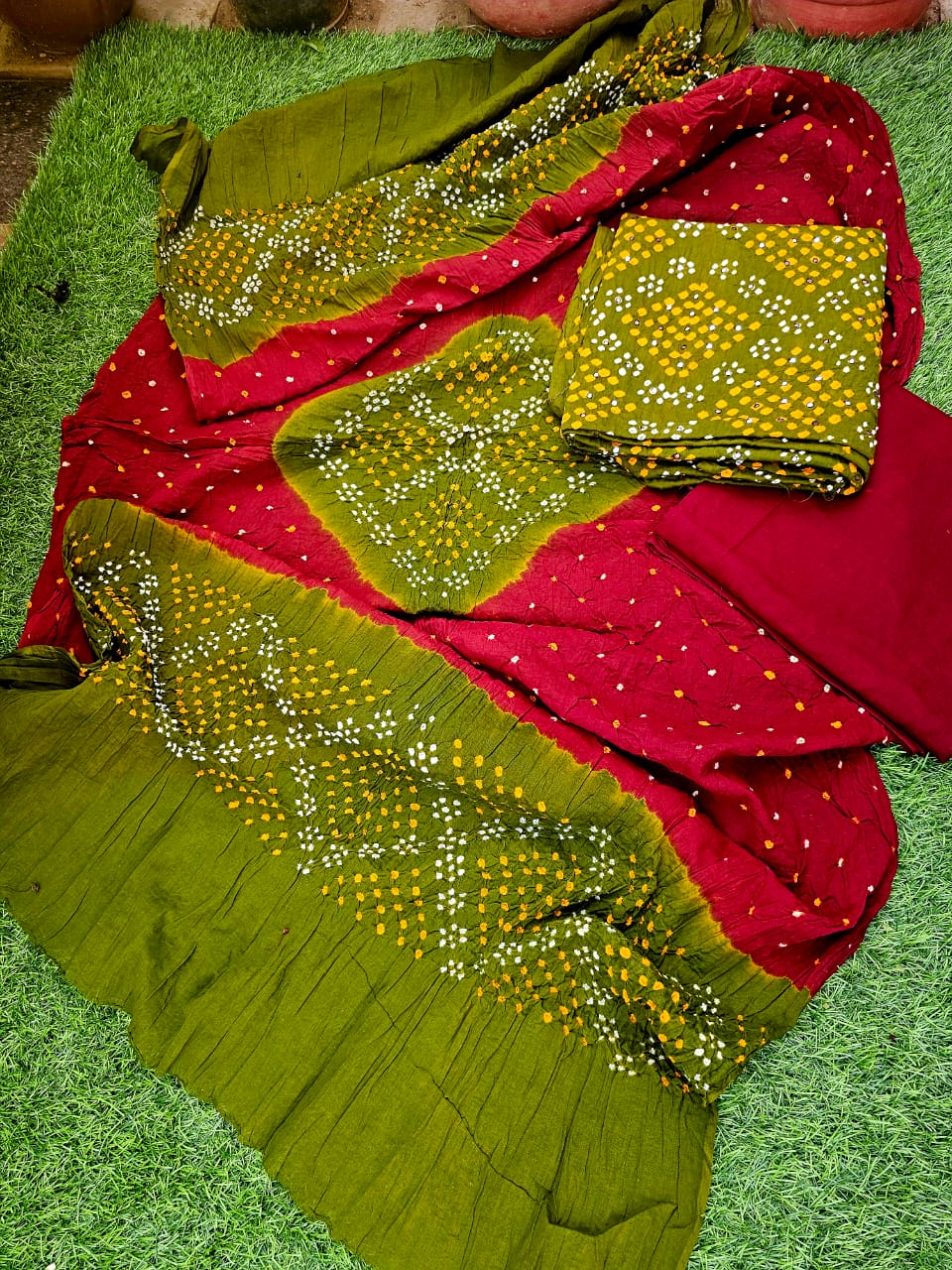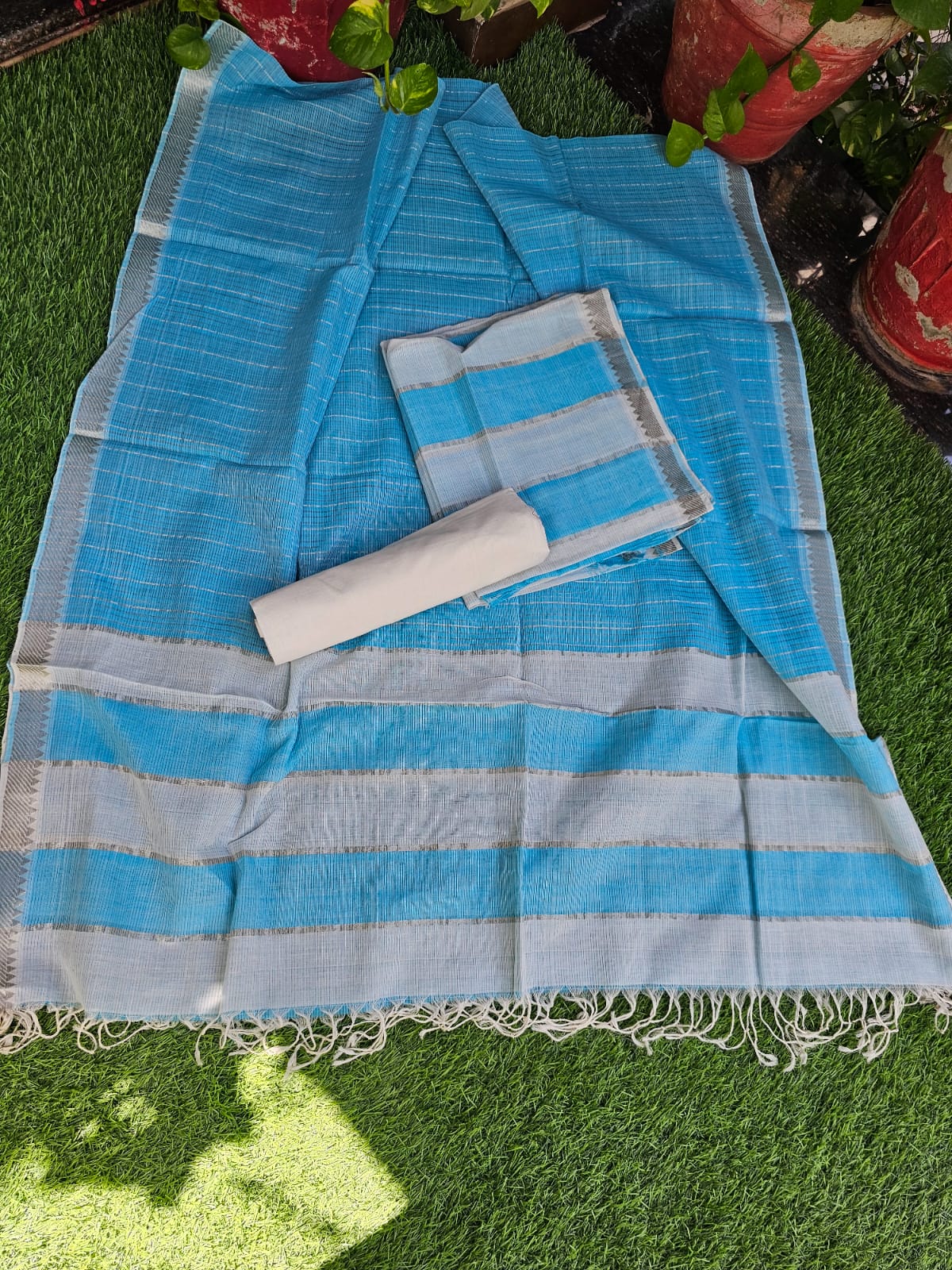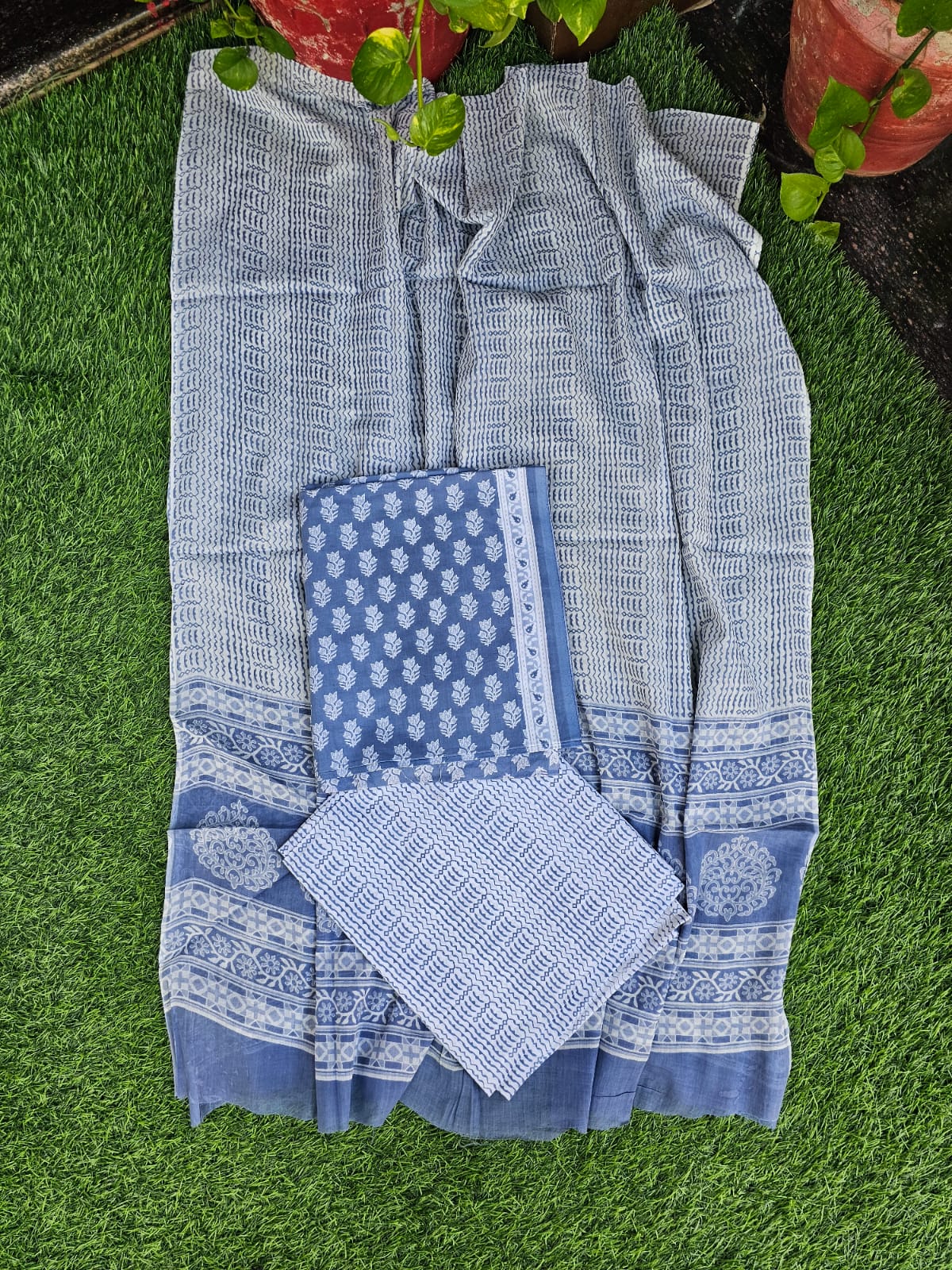Picking up?
Our Top Categories
Banarasi cloth, renowned for its opulence, is crafted through intricate weaving techniques originating from Varanasi, India. Artisans meticulously weave silk or cotton threads, often embellished with metallic yarns, to create elaborate patterns and motifs inspired by Mughal and Persian designs. The weaving process involves a blend of traditional handloom methods and modern techniques, ensuring each piece is a masterpiece of craftsmanship. The natural colors of Banarasi cloth are derived from organic sources, including plant extracts and minerals. Earthy tones like indigo, madder red, and mustard yellow dominate the palette, reflecting the rich cultural heritage of the region. These natural hues not only evoke a sense of authenticity but also contribute to the sustainability of the production process, aligning with contemporary values of eco-friendliness and ethical fashion.
Mangalgiri cloth, renowned for its elegance, is crafted through a meticulous process. Beginning with hand-picked cotton, artisans spin it into fine yarns, which are then meticulously woven on traditional handlooms. The distinctive feature of Mangalgiri fabric lies in its subtle texture, achieved through a unique weaving technique. Natural dyes derived from plants like indigo, turmeric, and pomegranate lend Mangalgiri its earthy hues. These colors, rich and organic, are a testament to the artisans' commitment to sustainability and traditional craftsmanship. Each thread tells a story of tradition and heritage, making Mangalgiri cloth not just a garment, but a piece of artistry that embodies centuries of skill and culture.
Venkatagiri cloth, renowned for its exquisite craftsmanship, is meticulously crafted in the historic town of Venkatagiri, Andhra Pradesh, India. The fabric is predominantly made of fine cotton, intricately woven by skilled artisans using traditional techniques passed down through generations. Known for its lightweight and breathable texture, Venkatagiri cloth is perfect for warm climates. Natural colors play a significant role in Venkatagiri cloth, reflecting the region's rich cultural heritage. Earthy tones like ochre, indigo, and mustard are derived from natural dyes sourced from plants and minerals found in the local environment. These hues not only enhance the beauty of the fabric but also symbolize the harmony between tradition and nature. Each piece of Venkatagiri cloth tells a story of craftsmanship and sustainability, making it a timeless treasure cherished by connoisseurs worldwide.
Hyderabad's iconic cloth, the Hyderabadi Ikkat, is a masterpiece of craftsmanship. Originating from the ancient art of tie-dyeing, skilled artisans meticulously bind and dye yarn before weaving it into intricate patterns on handlooms. The process involves tying sections of yarn tightly with thread to resist dye penetration, resulting in distinctive blurred edges and vibrant designs. Natural colors play a pivotal role in Hyderabadi Ikkat, showcasing the region's rich palette. Indigo lends its deep blue hues, extracted from the indigo plant, while madder root offers earthy reds. Turmeric contributes warm yellows, and pomegranate skins impart soft oranges. Each pigment, derived from botanical sources, reflects the artistry's commitment to sustainability and tradition. Hyderabadi Ikkat is not just a fabric; it's a testament to centuries-old techniques and the enduring beauty of natural dyes.
Odissi Ikat, a traditional Indian textile, is crafted through a meticulous process blending tie-dye and weaving techniques. Artisans skillfully bind sections of yarn before dyeing, creating intricate patterns that emerge as the fabric is woven. The process demands precision and patience, as each motif is carefully calculated to align perfectly within the finished piece. Natural dyes play a vital role in Odissi Ikat, yielding an array of earthy tones. Extracted from plants, minerals, and insects, these dyes infuse the fabric with rich hues ranging from deep indigos to vibrant reds and subtle yellows. The colors reflect the harmony between nature and artistry, capturing the essence of Odisha's lush landscapes and vibrant culture. Each Odissi Ikat garment tells a story of tradition, craftsmanship, and the timeless beauty of natural colors.
Chanderi silk is a luxurious fabric renowned for its exquisite craftsmanship and delicate texture. Originating from the town of Chanderi in Madhya Pradesh, India, it is meticulously handwoven by skilled artisans using traditional techniques passed down through generations. The fabric is woven from a blend of silk and cotton threads, giving it a unique sheen and drape. Chanderi silk is celebrated for its natural colors, which are often derived from organic dyes sourced from plants, flowers, and minerals. Earthy tones like indigo, madder, and turmeric are commonly used, creating a palette that reflects the rich heritage of Indian textiles. These natural hues not only enhance the beauty of the fabric but also resonate with sustainable and eco-friendly practices, making Chanderi silk a timeless and environmentally conscious choice for discerning fashion enthusiasts.
Maheshwar silk, renowned for its exquisite quality, is meticulously crafted in the town of Maheshwar, India. This luxurious fabric is traditionally handwoven using fine silk yarns, employing age-old techniques passed down through generations. Artisans weave intricate patterns, often inspired by nature or mythology, on handlooms, imbuing each piece with cultural significance and timeless elegance. One of the distinctive features of Maheshwar silk is its natural colors, derived from organic sources such as plant dyes and minerals. Earthy tones like indigo, madder, and turmeric are commonly used, reflecting the rich heritage and eco-friendly practices of the craft. These natural hues not only lend a unique aesthetic appeal to the fabric but also symbolize sustainability and harmony with the environment, making Maheshwar silk a cherished choice for discerning connoisseurs worldwide.





